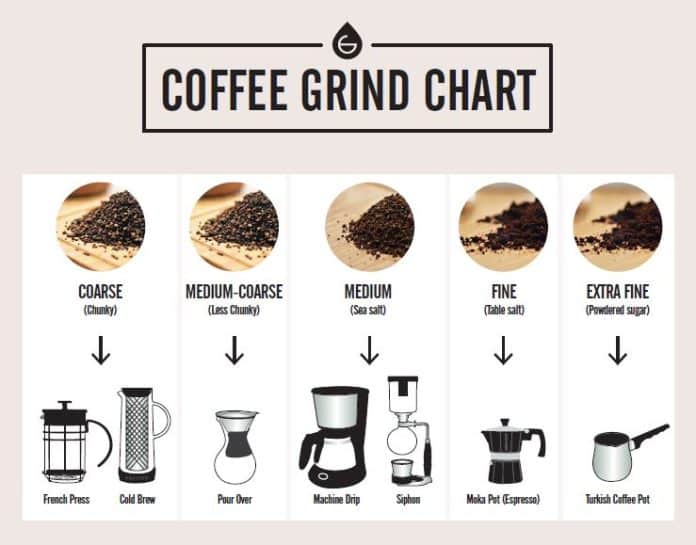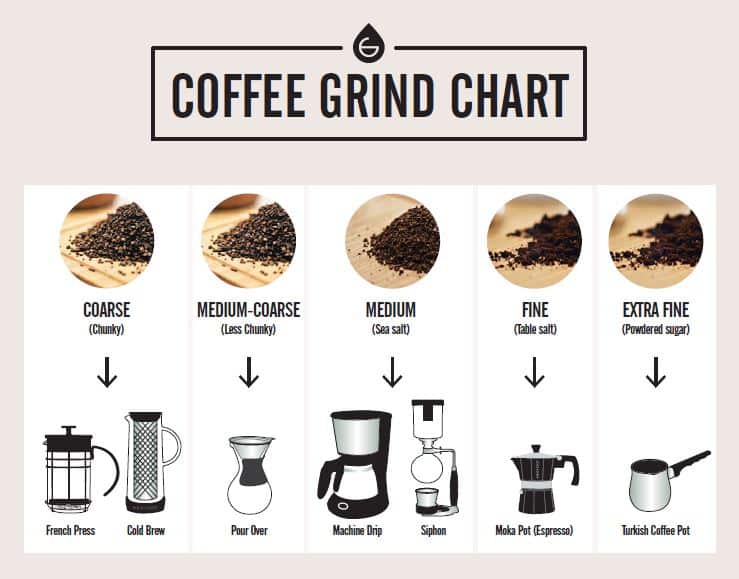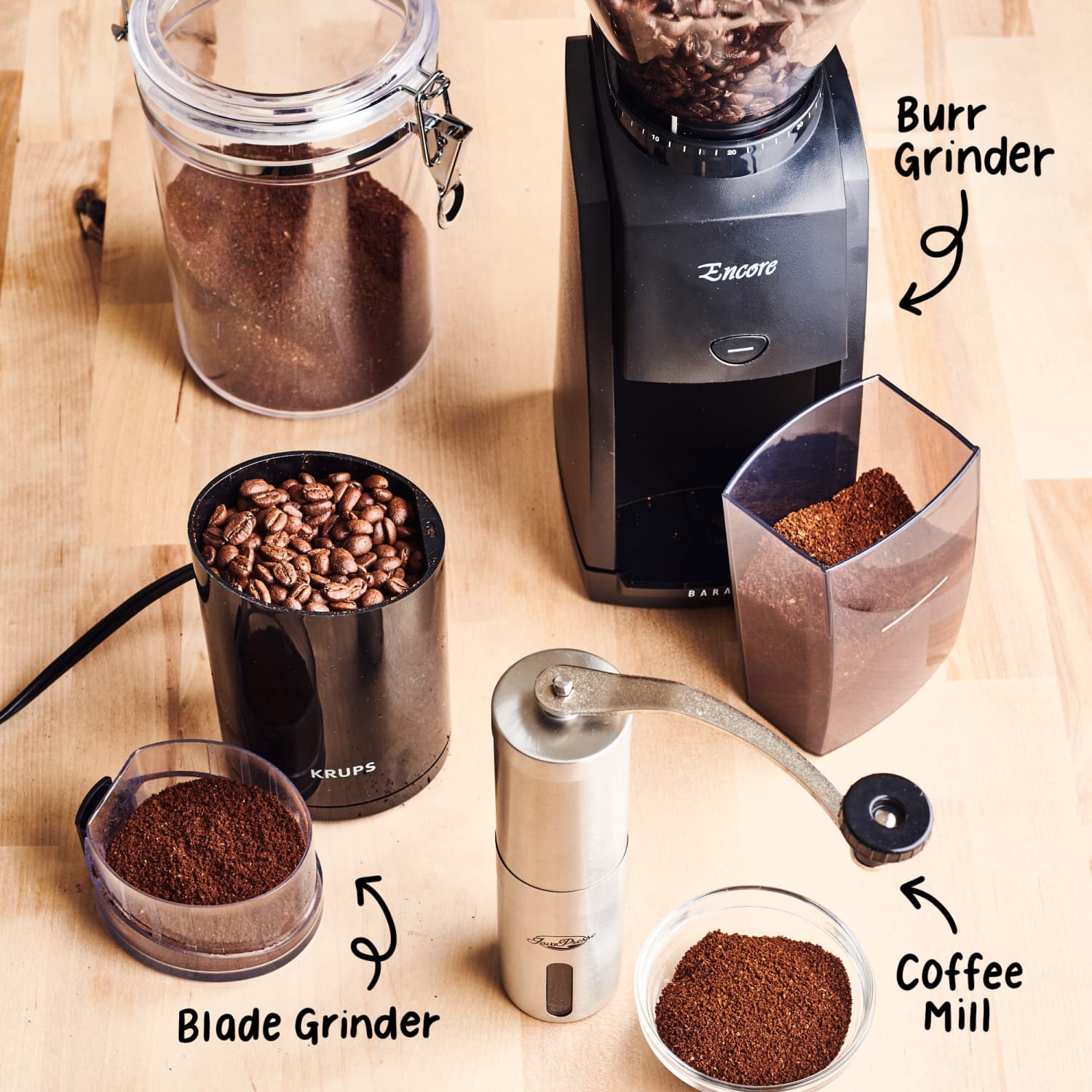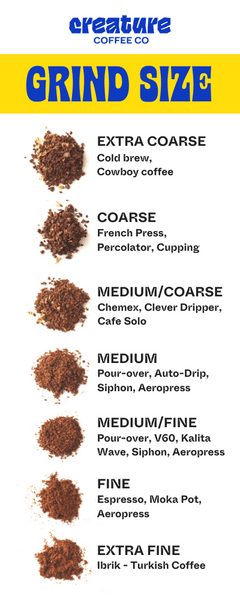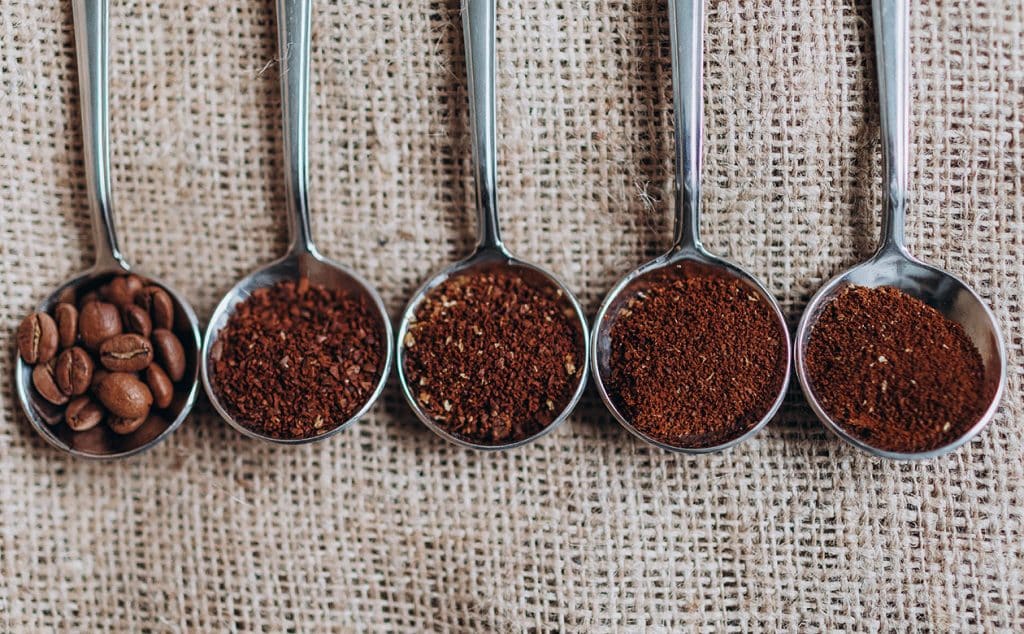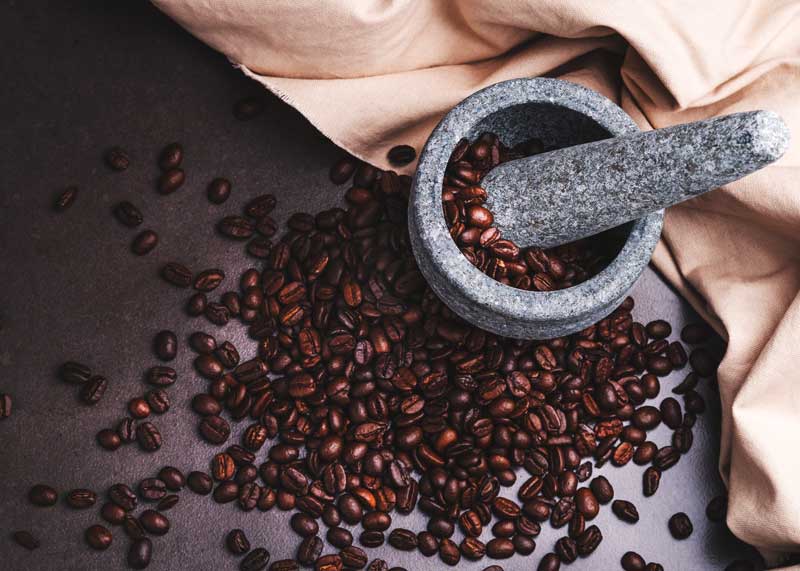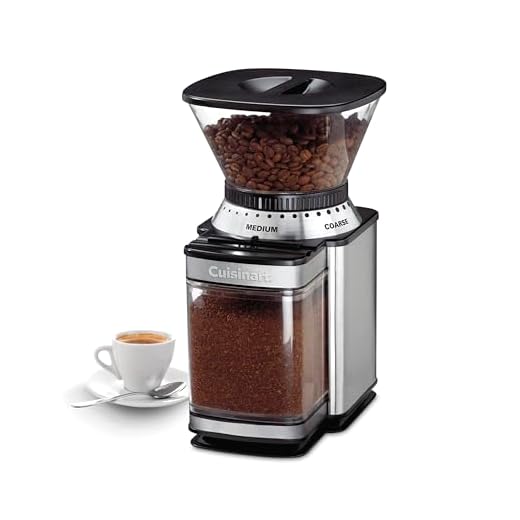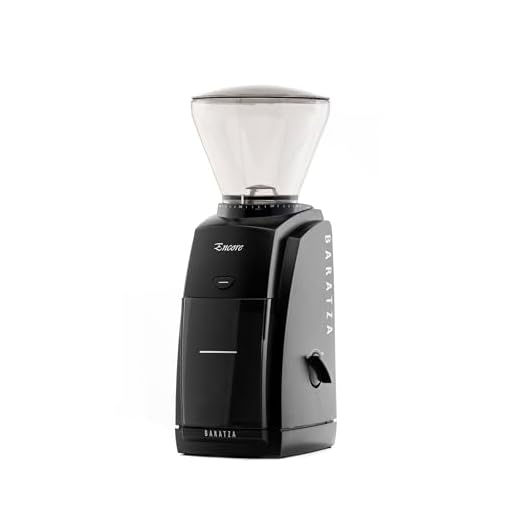If you’re a coffee enthusiast looking to elevate your at-home brewing game, you may ponder these two questions: Can I grind coffee beans at home?
Is a grinder necessary? The good news is that you can grind coffee beans at home, and a grinder can significantly enhance your coffee experience.
Whether you prefer the convenience of pre-ground coffee or the freshness and flavor of freshly ground beans, this article will explore the benefits of grinding at home and help you decide if investing in a grinder is right for you.
Get ready to discover freshly ground coffee’s joys right in your kitchen.
Methods for Grinding Coffee Beans at Home
When it comes to grinding coffee beans at home, there are several methods you can choose from.
Each method offers a different level of convenience and control, from manual grinders to high-powered blenders. In this article, we’ll explore the various methods available and discuss their advantages and disadvantages.
Whether you’re a coffee connoisseur looking to enhance your brewing experience or simply a coffee lover who wants to enjoy a fresh cup of joe, grinding your coffee beans at home can make a significant difference in the quality of your brew.
Using a Manual Grinder
A manual grinder is a traditional and hands-on approach to grinding coffee beans at home.
This method involves a simple mechanism of manually turning a handle to grind the coffee beans. Manual grinders come in different styles, such as hand-cranked grinders or ones that require more physical effort, like a mortar and pestle.
One of the advantages of using a manual grinder is the level of control it provides. You can adjust the grind size by using different settings on the grinder.
Additionally, manual grinders are often compact and portable, making them ideal for travelers or those who enjoy camping. They also produce less heat during grinding, which helps preserve the coffee beans’ flavor and aroma.
However, using a manual grinder does require some effort and time. Grinding enough coffee beans can be time-consuming, especially when preparing coffee for multiple people. Additionally, manual grinders may not offer as much consistency in grind size as other methods, which can affect the overall quality of your brew.
Using a Blade Grinder
Blade grinders are popular for coffee enthusiasts due to their affordability and convenience. These grinders use a high-speed spinning blade to chop the coffee beans into smaller particles. Blade grinders are generally easy to use and provide a quick and efficient way to grind your coffee beans at home.
One of the advantages of using a blade grinder is its simplicity. With just a button, you can have freshly ground coffee in seconds. Blade grinders are also more affordable than other grinders, making them a budget-friendly option.
However, blade grinders are not without their drawbacks. Due to the high-speed spinning blade, they can generate heat during the grinding process, which may affect the flavor and aroma of the coffee beans. Additionally, blade grinders often result in inconsistent grind sizes, leading to extraction issues and an uneven flavor profile in your coffee.
Using a Burr Grinder
Burr grinders are considered the gold standard when grinding coffee beans at home. These grinders use two burrs, one fixed and one rotating, to crush the coffee beans into a consistent grind size. Burr grinders offer a level of precision and control that coffee enthusiasts highly seek after.
One significant advantage of using a burr grinder is the ability to customize your grind size. You can adjust the settings on a burr grinder from coarse to fine to suit your brewing method. This precision allows you to extract the optimal flavors from your coffee beans, resulting in a more balanced and flavorful cup of coffee.
Another advantage of using a burr grinder is its ability to preserve the freshness of the coffee beans. Unlike blade grinders, burr grinders generate minimal heat during the grinding process, which helps to maintain the integrity of the coffee beans’ oils, flavors, and aromas.
Despite their many advantages, burr grinders can be more expensive than other grinders. However, many coffee enthusiasts believe that the investment is worth it for the superior quality of the grind and the resulting cup of coffee.
Using a Mortar and Pestle
If you’re looking for a more traditional and hands-on method of grinding coffee beans, using a mortar and pestle is an excellent option. This ancient method involves manually crushing the coffee beans using a mortar and pestle, which provides complete control over the grind size and intensity.
One advantage of using a mortar and pestle is finely grinding the coffee beans. This method lets you release the full range of flavors and aromas locked within the coffee beans, resulting in a rich and flavorful cup of coffee. Additionally, using a mortar and pestle can be a therapeutic and enjoyable experience for those who appreciate the process of coffee preparation.
However, grinding coffee beans with a mortar and pestle requires time and physical effort. It can be slower and more labor-intensive than using an electric grinder. Additionally, achieving consistent grind sizes can be challenging with a mortar and pestle, which may impact the overall quality of your brew.
Using a Blender or Food Processor
For those with a blender or food processor at home, this method can be a convenient alternative for grinding coffee beans. Pulse the coffee beans in the blender or food processor until you achieve the desired grind size. This method is quick and efficient, especially for larger quantities of coffee.
One advantage of using a blender or food processor is the convenience factor. Most households have these appliances readily available, making it an accessible option for grinding coffee beans at home. Additionally, using a blender or food processor allows you to control the texture of the grind, depending on your preferred brewing method.
However, using a blender or food processor may not provide the same level of precision as dedicated coffee grinders. The resulting grind size may be more inconsistent, affecting the extraction process and, ultimately, the taste of your coffee.
It’s also worth noting that using a blender or food processor may generate more noise and create a potential mess, so be prepared for those factors when using this method.
Advantages of Grinding Coffee Beans at Home
Now that we’ve explored the various methods of grinding coffee beans at home let’s discuss some of the advantages of doing so.
Unleashing Fresh Aromas and Flavors
One of the critical advantages of grinding coffee beans at home is the ability to unlock the fresh aromas and flavors often lost in pre-ground coffee. Whole coffee beans retain their flavors and aromas much better than pre-ground coffee, allowing you to enjoy a more vibrant and flavorful cup of coffee every time.
Ability to Customize Grind Size
Another advantage of grinding coffee beans at home is the ability to customize the grind size to suit your preferred brewing method. Different brewing methods, such as pour-over, French press, or espresso, require different grind sizes for optimal extraction.
By grinding your coffee beans at home, you have complete control over the grind size, allowing you to tailor the flavor and strength of your coffee to your liking.
Preserving Bean Freshness
When coffee beans are roasted, they undergo a process called degassing, which releases carbon dioxide. This degassing process continues after roasting and can significantly impact the beans’ freshness.
By grinding coffee beans at home, you can ensure you’re using the freshest beans possible, as whole beans retain their freshness much longer than pre-ground coffee.
Cost-effective in the Long Run
While the initial investment in a coffee grinder may seem costly, grinding your coffee beans at home can save you money in the long run. Pre-ground coffee often comes at a higher price compared to whole beans.
By purchasing whole beans and grinding them at home, you can enjoy a fresher and more flavorful cup of coffee and save money over time.
Disadvantages of Grinding Coffee Beans at Home
While there are numerous advantages to grinding coffee beans at home, it’s essential to consider the potential disadvantages.
Investment in Equipment
One of the main drawbacks of grinding coffee beans at home is the initial investment required for equipment. Electric burr grinders, in particular, can be pretty expensive, and this cost may deter some coffee enthusiasts from pursuing home grinding.
However, it’s worth considering the long-term benefits and savings in coffee quality and cost that can be achieved with a good grinder.
Potential Inconsistencies in Grind Size
Another potential disadvantage of grinding coffee beans at home is the risk of inconsistent grind sizes. Some coffee grinders, particularly blade grinders and manual grinders, may produce uneven particle sizes, affecting your coffee’s quality and flavor extraction. Choosing a grinder with consistent grind sizes is essential, and adjust the settings accordingly.
Additional Time and Effort
Grinding coffee beans at home can add an extra step to your coffee brewing routine, requiring additional time and effort. This can be a turn-off for those prioritizing convenience and speed in their morning routine. However, many coffee enthusiasts find grinding their beans a fulfilling and enjoyable part of their coffee ritual.
Noise and Potential Mess
An electric grinder, blender, or food processor can generate noise, which may not be ideal for those living in shared spaces or sensitive to noise.
Additionally, grinding coffee beans can create a potential mess, with coffee grounds scattered on countertops or floors. Considering these factors and choosing a grinding method that suits your environment and personal preferences is essential.
Types of Coffee Grinders
Now that we’ve discussed the advantages and disadvantages of grinding coffee beans at home let’s explore the different types of coffee grinders available.
Manual Grinders
Manual grinders are hand-operated and require physical effort to grind coffee beans. These grinders are often compact and portable, making them ideal for travel or those who enjoy camping. Manual grinders can provide a more hands-on and traditional coffee grinding experience.
Blade Grinders
Blade grinders use a high-speed spinning blade to chop the coffee beans into smaller particles. These grinders are affordable and easy to use, making them popular among coffee enthusiasts. However, they may produce inconsistent grind sizes and generate heat during grinding.
Burr Grinders
Burr grinders crush the coffee beans between two burrs, resulting in a more consistent grind size.
These grinders offer superior control and precision, allowing you to customize the grind size according to your brewing method. Burr grinders are often considered the best option for grinding coffee beans at home.
Manual Grinders
Manual grinders offer a more traditional and hands-on approach to grinding coffee beans. These grinders come in various styles, such as hand-cranked grinders requiring a mortar and pestle.
How They Work
Manual grinders typically have a chamber for holding the coffee beans and a handle or crank that needs to be turned manually. The coffee beans are crushed or ground by rotating the handle, resulting in the desired grind size.
Pros and Cons
One advantage of manual grinders is their portability and compact size, making them suitable for any location, even without access to electricity. These grinders also tend to produce less heat during the grinding process, preserving the flavor and aroma of the coffee beans.
However, manual grinders require physical effort and can be more time-consuming than electric grinders. Achieving consistent grind sizes can also be challenging with manual grinders, which may affect the quality of your coffee.
Popular Models
Some popular models of manual grinders include the Hario Skerton Pro, Porlex Mini Stainless Steel Grinder, and the JavaPresse Manual Coffee Grinder.
Blade Grinders
Blade grinders are a common choice for those looking for a quick and affordable way to grind their coffee beans at home. These grinders use a spinning blade to chop the coffee beans into smaller pieces.
How They Work
Using a blade grinder is simple. Secure the lid by adding the desired coffee beans to the grinder’s chamber.
When you press a button or switch, the blade starts spinning rapidly, chopping the coffee beans into smaller particles.
Pros and Cons
One advantage of blade grinders is their affordability. They are less expensive than other grinders, making them accessible to coffee enthusiasts. Blade grinders are also easy to use and provide a quick way to grind coffee beans.
However, blade grinders have some drawbacks. The spinning blade generates heat during the grinding process, which can potentially affect the flavor and aroma of the coffee beans.
Additionally, blade grinders often produce inconsistent grind sizes, resulting in an uneven extraction and less refined flavor in your coffee.
Popular Models
Some popular models of blade grinders include the KRUPS F203 Electric Spice and Coffee Grinder, the Hamilton Beach Fresh Grind Electric Coffee Grinder, and the KitchenAid Blade Coffee Grinder.
Burr Grinders
Burr grinders are considered the best option for grinding coffee beans at home. These grinders crush the coffee beans between two burrs, resulting in a more consistent grind size.
How They Work
In a burr grinder, coffee beans are fed into a hopper, which leads them between two burrs. One burr is stationary, while the other rotates. The coffee beans pass through the burrs and are crushed into the desired grind size.
Pros and Cons
One of the primary advantages of burr grinders is their ability to offer precise control over the grind size. Adjusting the distance between the burrs allows you to achieve the optimal grind size for your preferred brewing method.
Burr grinders also generate minimal heat during the grinding process, preserving the flavor and aroma of the coffee beans.
On the downside, burr grinders are more expensive than other grinders. However, many coffee enthusiasts consider the investment worthwhile due to the superior grind quality and better flavor extraction.
Popular Models
Some popular models of burr grinders include the Baratza Encore, Breville Smart Grinder Pro, and the OXO Brew Conical Burr Coffee Grinder.
Alternative Methods of Grinding
While a dedicated coffee grinder is the most common method for grinding coffee beans at home, there are a few alternative methods to consider.
Using a Mortar and Pestle
Using a mortar and pestle is a more traditional and hands-on method of grinding coffee beans. This method manually crushes the coffee beans using a mortar and pestle until the desired grind size is achieved. While it requires time and physical effort, it provides complete control over the grind size and intensity.
Using a Blender or Food Processor
You can grind coffee beans at home if you own a blender or food processor. Simply pulse the coffee beans until you achieve the desired grind size. This method is quick and convenient, especially for larger quantities of coffee. However, it may not provide the same level of consistency as dedicated coffee grinders.
Grinding Services at Cafes or Stores
Many cafes and stores offer grinding services if you don’t own a grinder or prefer not to grind coffee beans at home. Simply take your whole beans to a cafe or store with grinding equipment, and they will grind them for you.
While this option may be convenient, it’s worth noting that the level of control over grind size and freshness is limited compared to grinding your beans at home.
Factors to Consider when Choosing a Grinder
When selecting a grinder for grinding coffee beans at home, there are several factors to consider, including:
Budget
Grinders vary significantly in price, so it’s essential to determine your budget before purchasing. While investing in a high-quality grinder may be more expensive upfront, it can offer better grind consistency and longevity.
Consistency
Consistency in grind size is crucial for achieving optimum flavor extraction. Look for a grinder that offers consistency across various grind settings to ensure a more balanced and flavorful cup of coffee.
Grind Size Options
Different brewing methods require different grind sizes. Consider the brewing methods you enjoy or plan to explore and choose a grinder that offers the appropriate grind size options for them.
Ease of Use and Clean-up
A grinder that is easy to use and clean can significantly enhance your coffee brewing experience. Look for features like user-friendly controls and removable components for easy cleaning.
Conclusion
Grinding coffee beans at home offers numerous advantages, including the ability to unlock fresh aromas and flavors, tailor the grind size to your preferred brewing method, preserve bean freshness, and save money in the long run.
While some potential drawbacks, such as the initial investment in equipment and the risk of inconsistent grind sizes, the benefits of grinding coffee beans at home generally outweigh the disadvantages.
Whether you choose a manual grinder, blade grinder, or burr grinder, each method offers a unique experience and level of control over the grinding process. Consider your budget, desired grind consistency, available grind size options, ease of use, and clean-up when choosing a grinder that suits your needs.
Grinding coffee beans at home can be a rewarding and enjoyable part of your coffee brewing routine. The freshness, flavor, and aroma of your coffee will be elevated, allowing you to savor every sip and experience the full potential of this beloved beverage.
So invest in a quality grinder and embark on your journey to the perfect cup of coffee sourced from freshly ground beans.
Coffee Grinder by Cusinart, Electric Burr One-Touch Automatic Grinder with18-Position Grind Selector, Stainless Steel, DBM-8P1
10 used from $48.59
Breville Smart Grinder Pro Coffee Bean Grinder, Brushed Stainless Steel, BCG820BSS, 2.3
11 used from $181.95
Baratza Encore Conical Burr Coffee Grinder (Black)
1 used from $142.45
Hamilton Beach Fresh Grind Electric Coffee Grinder for Beans, Spices and More, Stainless Steel Blades, Removable Chamber, Makes up to 12 Cups, Black
12 used from $20.03
Gevi Electric Coffee Grinder Stainless Steel Blade Grinder for Coffee Espresso Latte Mochas, Noiseless Operation.GECGI140-U-1
OXO Brew Conical Burr Coffee Grinder , Silver
7 used from $102.46


